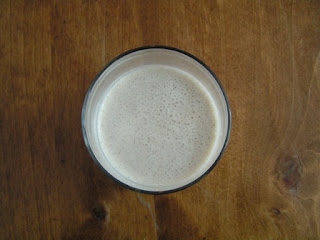
We are now back in the States (that’s another story) and actually spent Thanksgiving there, but before we left Indonesia I did manage to make pumpkin pie using the pumpkins sold in the markets here,
labu kuning.
Above are some
labu kuning on sale in the wonderful market in Jakarta. In our home city, in Central Kal, you don’t see huge stacks of
labu kuning like this, usually no more than a quarter of a pumpkin sitting forlornly atop the other veggies. A quarter of a pumpkin being all that was available, I bought it hoping it would yield enough pumpkin to make the Better Homes & Gardens recipe below. I also expected that it would take a couple of hours to cook down. To my surprise, in only 45 minutes the pumpkin chunks that I boiled were soft enough to mash and drain. It yielded almost exactly 16 ounces of mashed pumpkin, and I had enough pumpkin pie filling that I had to cook the extra in a little Pyrex bowl. The hardest part was cutting the rind off the extremely hard pumpkin slices.
Below are some halved
labu kuning being sold alongside beans and sweet potatos.

Seed, peel and cube about ¼ of a
labu kuning. Put in a pot, cover in water, and boil 45 minutes or until soft. Drain, mash, and drain again. While the pumpkin is boiling and draining, make the crust. Then proceed with the recipe.
IngredientsCrust1 ¼ cups all-purpose flour
1/3 cup shortening (
mentega putih)
5 to 7 tablespoons cold water
Filling16 ounces stewed pumpkin
2/3 cup sugar
1 t ground cinnamon
½ t ground ginger
½ t ground nutmeg
3 eggs, beaten
1 5-oz can (2/3 cup) evaporated milk (NOT sweetened condensed milk)
½ cup milk
1 large square aluminum foil with the middle cut out
MethodPreheat oven 375 F, 190 C.
For crust, put flour in a mixing bowl. Using a pastry blender or fork, cut in shortening till pieces are pea-sized. Sprinkle 1 tablespoon of water over part of the mixture; gently toss with a fork. Push moistened dough to the side of the bowl. Repeat process till all the dough is moistened. Form dough into a ball. On a lightly floured surface, use your hands to slightly flatten dough. Roll dough with a floured rolling pin from the center to the edges into a circle about 12” in diameter. To transfer pastry, wrap it around the rolling pin. Unroll the pastry into a 9-inch pie plate. Ease pastry into pie plate, being careful not to stretch pastry. Trim pastry to ½ inch beyond edge of pie plate. Use the trimmed pieces to patch the pie crust as needed; fold the edge under and crimp as desired.
For filling, in a large mixing bowl combine pumpkin, sugar, cinnamon, ginger, and nutmeg. Add eggs. Beat lightly and carefully with a fork or wire whisk just till combined. Gradually stir in evaporated milk and milk; mix well.
To prevent overbrowning, cover the pastry crust with the aluminum foil with the middle cut out. Crimp or fold foil over the edges of the pie plate until it stays in place. Pull out oven rack; place pastry-lined pie plate on oven rack. Carefully pour filling into pastry shell through the large hole in the middle of the foil. Carefully slide oven rack back in.
Bake in a 375 F oven for about 40 minutes. Carefully remove foil. Bake 10 minutes more or until a knife inserted near the center of the pie comes out clean. (I had to bake much longer than 50 minutes total before the knife came out clean!). Cool on a wire rack. Refrigerate within 2 hours; cover for longer storage. Makes 8 servings.



























